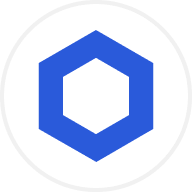Chainlink Oracle Cross-Chain: Unlocking Blockchain Interoperability and DeFi Innovation
Introduction to Chainlink Oracle Cross-Chain Technology
Blockchain technology has transformed industries by enabling decentralized, secure, and transparent systems. However, one of the most pressing challenges in the blockchain ecosystem is achieving seamless interoperability between different networks. This is where Chainlink, the industry-standard decentralized oracle network, plays a pivotal role. With its Cross-Chain Interoperability Protocol (CCIP), Chainlink is unlocking new possibilities for secure cross-chain transactions, data sharing, and token transfers.
In this article, we’ll explore how Chainlink’s oracle technology is driving blockchain interoperability, its impact on decentralized finance (DeFi), and its role in bridging traditional finance (TradFi) with blockchain systems.
What is Chainlink and Why is it Important?
Chainlink is a decentralized oracle network that enables smart contracts to securely interact with real-world data, APIs, and off-chain systems. It has become the backbone of blockchain infrastructure, securing over $93 billion in total value across multiple blockchains.
Key Features of Chainlink
Decentralized Oracles: Provide tamper-proof data feeds for smart contracts, ensuring accuracy and reliability.
High Adoption: Widely used in DeFi, gaming, insurance, and other industries.
Institutional Partnerships: Collaborates with major players like SWIFT, Mastercard, and UBS to integrate blockchain with traditional financial systems.
Understanding the Cross-Chain Interoperability Protocol (CCIP)
The Cross-Chain Interoperability Protocol (CCIP) is one of Chainlink’s flagship innovations. It is designed to facilitate secure and seamless communication between different blockchain networks.
Applications of CCIP
Cross-Chain Token Transfers: Enables the transfer of assets like stablecoins and tokenized real-world assets (RWAs) across blockchains.
Data Sharing: Allows decentralized applications (dApps) to access and share data across multiple chains, enhancing functionality and user experience.
Interoperable Smart Contracts: Developers can create smart contracts that operate across different blockchain ecosystems, fostering innovation and collaboration.
By addressing the interoperability challenge, CCIP is paving the way for a more connected and efficient blockchain ecosystem.
Chainlink’s Role in Decentralized Finance (DeFi)
DeFi has emerged as one of the most transformative applications of blockchain technology, and Chainlink is at the heart of this revolution. Its oracles provide critical infrastructure for DeFi protocols, ensuring accurate and reliable data feeds.
Key Contributions to DeFi
Price Feeds: Power lending platforms, decentralized exchanges, and derivatives markets with real-time, tamper-proof price data.
Stablecoins: Ensure transparency and trust through Proof of Reserve (PoR), which verifies the reserves backing stablecoins and tokenized assets.
Lending and Borrowing: Enable secure and efficient lending markets by providing accurate collateral valuations.
Bridging Traditional Finance (TradFi) and Blockchain
Chainlink is not just limited to the blockchain world; it is actively working to bridge the gap between traditional finance (TradFi) and blockchain systems. Through partnerships with financial institutions like SWIFT and Mastercard, Chainlink is enabling the tokenization of real-world assets and modernizing financial systems.
Use Cases in TradFi
Tokenized Assets: Facilitates the transfer and management of tokenized real-world assets (RWAs) across blockchains.
Cross-Border Payments: Supports secure and efficient international transactions.
Regulatory Compliance: The Automated Compliance Engine (ACE) embeds compliance policies, such as KYC/AML, into smart contracts, ensuring regulatory adherence.
Enhancing Scalability with Layer-2 Integrations
Scalability is a critical challenge for blockchain networks, and Chainlink addresses this through integrations with Layer-2 solutions like Polygon and Taiko. These integrations improve scalability, reduce latency, and lower gas fees for blockchain applications.
Benefits of Layer-2 Integrations
Cost Efficiency: Reduces transaction costs for users and developers.
Improved Performance: Enhances the speed and efficiency of blockchain applications.
Broader Adoption: Makes blockchain technology more accessible to a wider audience.
Chainlink’s Role in Tokenization and Real-World Asset Management
Tokenization is the process of representing real-world assets, such as real estate, stocks, or commodities, as digital tokens on a blockchain. Chainlink plays a crucial role in enabling this transformation by providing secure and reliable data feeds.
Key Applications
Real Estate: Tokenized property ownership and management.
Commodities: Transparent and efficient trading of tokenized commodities.
Financial Instruments: Simplified management of tokenized bonds and securities.
The Utility of Chainlink’s LINK Token
The LINK token is the native cryptocurrency of the Chainlink ecosystem. It serves multiple purposes, including:
Staking: Secures the network by incentivizing node operators to provide reliable data.
Payments: Used to pay for oracle services, ensuring a seamless and decentralized ecosystem.
Collateral: Supports decentralized applications by acting as collateral for various use cases.
Mechanisms like Payment Abstraction and the Chainlink Reserve ensure the long-term sustainability and utility of the LINK token.
The Future of Chainlink in Blockchain Interoperability
As blockchain technology continues to evolve, the need for interoperability and reliable data feeds will only grow. Chainlink is well-positioned to become the backbone of blockchain interoperability and Web3 infrastructure.
Key Takeaways
Chainlink’s CCIP is a game-changer for cross-chain communication.
Its oracles are critical for the growth of DeFi and tokenized assets.
Partnerships with financial institutions highlight its role in modernizing finance.
Innovations like SCALE, PoR, and ACE ensure scalability, transparency, and compliance.
By addressing the challenges of interoperability, scalability, and trust, Chainlink is shaping the future of decentralized ecosystems and driving the adoption of blockchain technology across industries.
© 2025 OKX. Tätä artikkelia saa jäljentää tai levittää kokonaisuudessaan, tai enintään 100 sanan pituisia otteita tästä artikkelista saa käyttää, jos tällainen käyttö ei ole kaupallista. Koko artikkelin kopioinnissa tai jakelussa on myös mainittava näkyvästi: ”Tämä artikkeli on © 2025 OKX ja sitä käytetään luvalla.” Sallituissa otteissa on mainittava artikkelin nimi ja mainittava esimerkiksi ”Artikkelin nimi, [tekijän nimi tarvittaessa], © 2025 OKX.” Osa sisällöstä voi olla tekoälytyökalujen tuottamaa tai avustamaa. Tämän artikkelin johdannaiset teokset tai muut käyttötarkoitukset eivät ole sallittuja.

